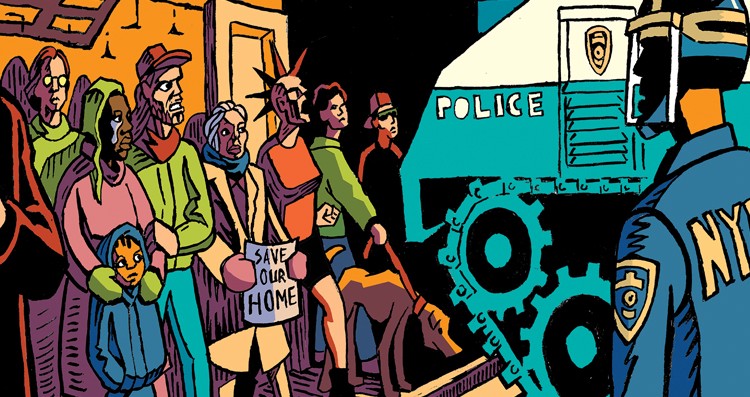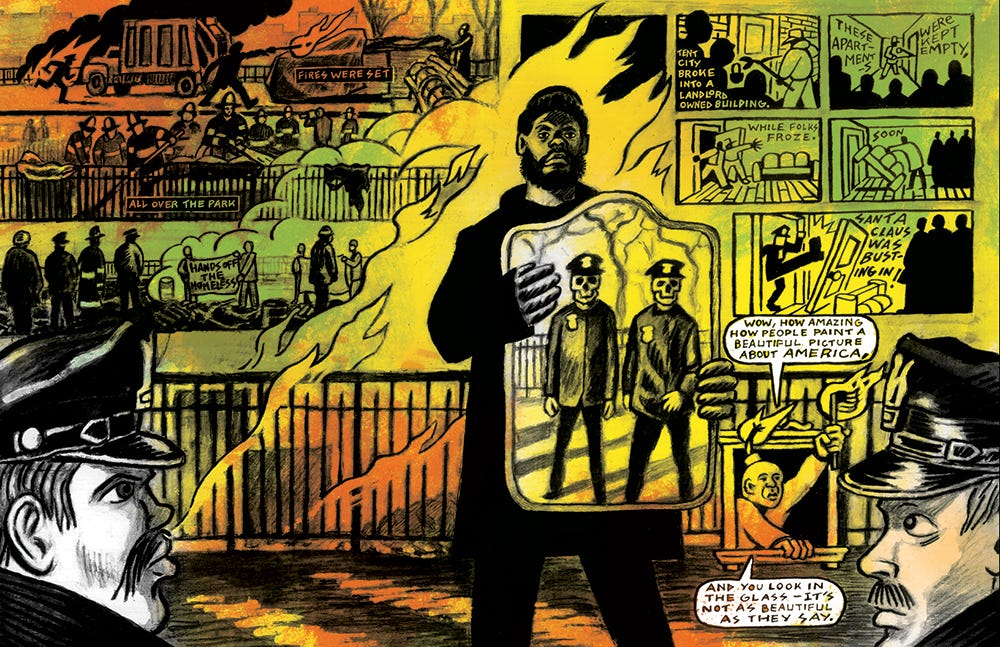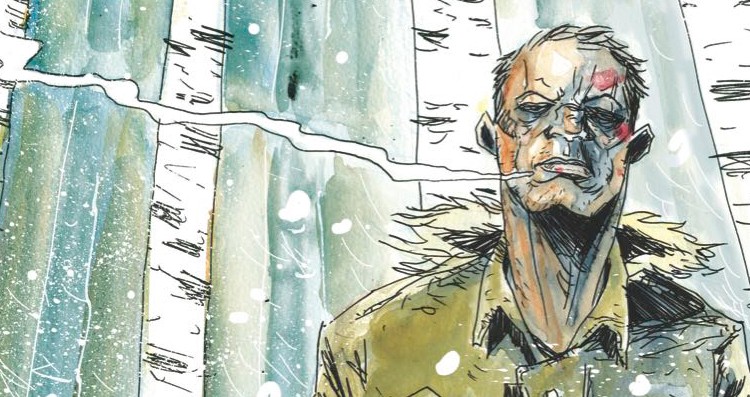Books & Culture
Iconic Graphic Novel to Be Reissued for a New Generation Because the Rent Is Still Too Damn High
What the 1990s can teach us about life and activism in 2016

“If Amerikkkan society has an orifice,” Seth Tobocman writes in the opening chapter of his underground classic graphic autofiction, War in the Neighborhood, “a mouth through which it breathes, an asshole through which it shits, it is the Lower East Side of Manhattan. Which orifice depends on who you ask and what their political agenda is.”
War in the Neighborhood is a document of and reaction to the Lower East Side in the 1980s and 1990s, a period of increasing class conflict and rapid gentrification that saw the end of an affordable Manhattan. The book’s linked stories take place mostly in the squats: formerly abandoned buildings taken over and rehabilitated by squatters for a variety of reasons ranging from activism to a simple, acute need for housing. A few stories are centered in and around Tompkins Square Park, which for generations served as the heart of radical political speech and action in New York. It was the site of the Tompkins Square Park Riot of August 1988 and the homeless encampment known as Tent City — both of which are documented in the book.

The stories come together to form a picture of a diverse community at a unique sociopolitical moment. The squatters and the homeless and the activists in these pages struggle against each other and themselves as much as they struggle against the police and the politicians and the real estate developers and the ever-encroaching tide of gentrification. There are no pure heroes to be found; there are no pure villains. Tobocman casts himself as a character — at once full participant and witness — but he is also the semi-detached narrator who presents the story with clear eyes and a fair, even hand. In Tobocman’s world, everyone is complex and flawed. Everyone makes mistakes. Everyone is capable of hurting others. Everyone is worthy of love and safety, and a place to call home.
War in the Neighborhood was first published in 1999 by Autonomedia, and went out of print in 2004. (The book still passed from hand to hand, its reputation growing as the price for the few remaining copies skyrocketed on Amazon.) At the time of its publication, it was a comment on the very recent past. 1995 and 1996 saw the last of the City’s massive, militaristic evictions of squats on the Lower East Side, and the years immediately following were a time of uneasy quiet, when squatters were trying to work toward an agreement with the City to turn their buildings into permanent low-income co-ops. That agreement was, indeed, struck, and the eleven remaining squats in the neighborhood began to convert to legal status in 2002, but even with that (somewhat controversial, perhaps pyrrhic) victory, it was clear that the economic and cultural climate that birthed the squats and allowed them to develop and, in some ways, thrive, had come to an end. And so when it was first released, the book served as both a mourning for what had been lost and a call to action for continued activism in a city where affordable housing was nearly extinct.

But War in the Neighborhood is not just about affordable housing. It is about individuals trying to live together in groups. It is about compassion and understanding and the absence of compassion and understanding. It is a reminder to all groups — particularly activist groups — that none of us are untainted by the white patriarchal power structure we’ve been raised in. In many of these stories, the squats are weakened by internal rifts caused by sexism and racism, leaving the groups fractured when it comes time to face the external forces of government and police. We see white squatters holding black people who would join the squats to different standards than they do white males. We see female squatters threatened and intimidated by male squatters. We see long-established squatters trying to drive out newcomers who are just looking for a roof over their heads.
Tobocman writes, “We come face to face with the cop, which is us. With the landlord, which is us. With the racist, which is us. With the sexist, which is us. With the fascist, which is us.”

We find ourselves now, in 2016, more in need of housing rights activism than ever. Not just in New York, but nationwide. At the same time, many of us are turning inward to recognize how even in liberal and radical spaces, racism and sexism are enormous obstacles. And so it seems particularly timely that into our current climate, once again at a unique moment of sociopolitical tension and possibility, publisher Ad Astra Comix is reissuing War in the Neighborhood. They’re running an Indiegogo campaign to support the publication, but it will be reissued regardless of the outcome of the fundraising. The new edition will feature the same compelling stories illustrated in Tobcman’s bold, angular, black-and-white style, with a new introduction by AK Thompson and, unlike the first edition, a binding that won’t fall apart in your hands. Highly recommended for the reader, the graphic-novel fan, the activist, the human being.









